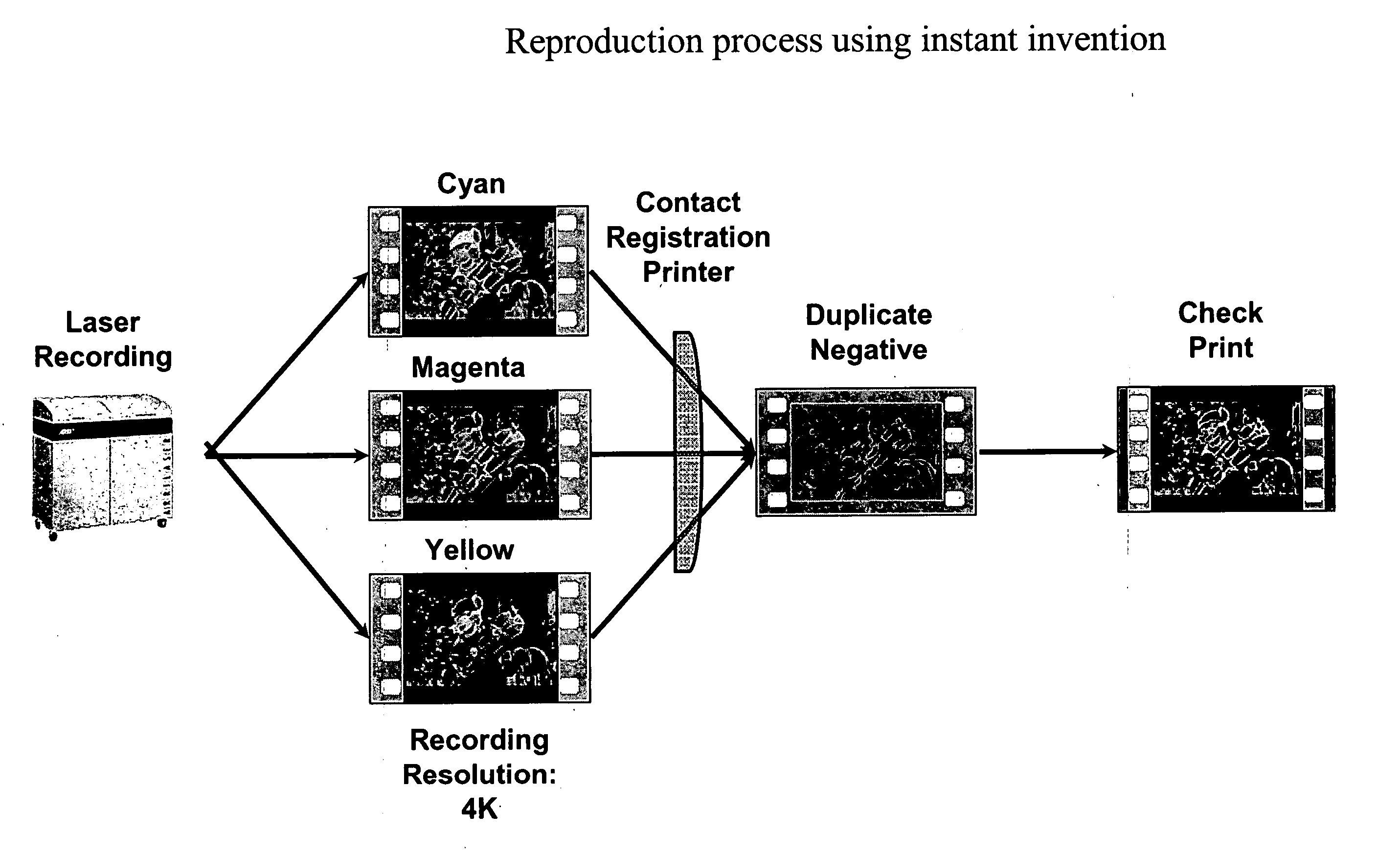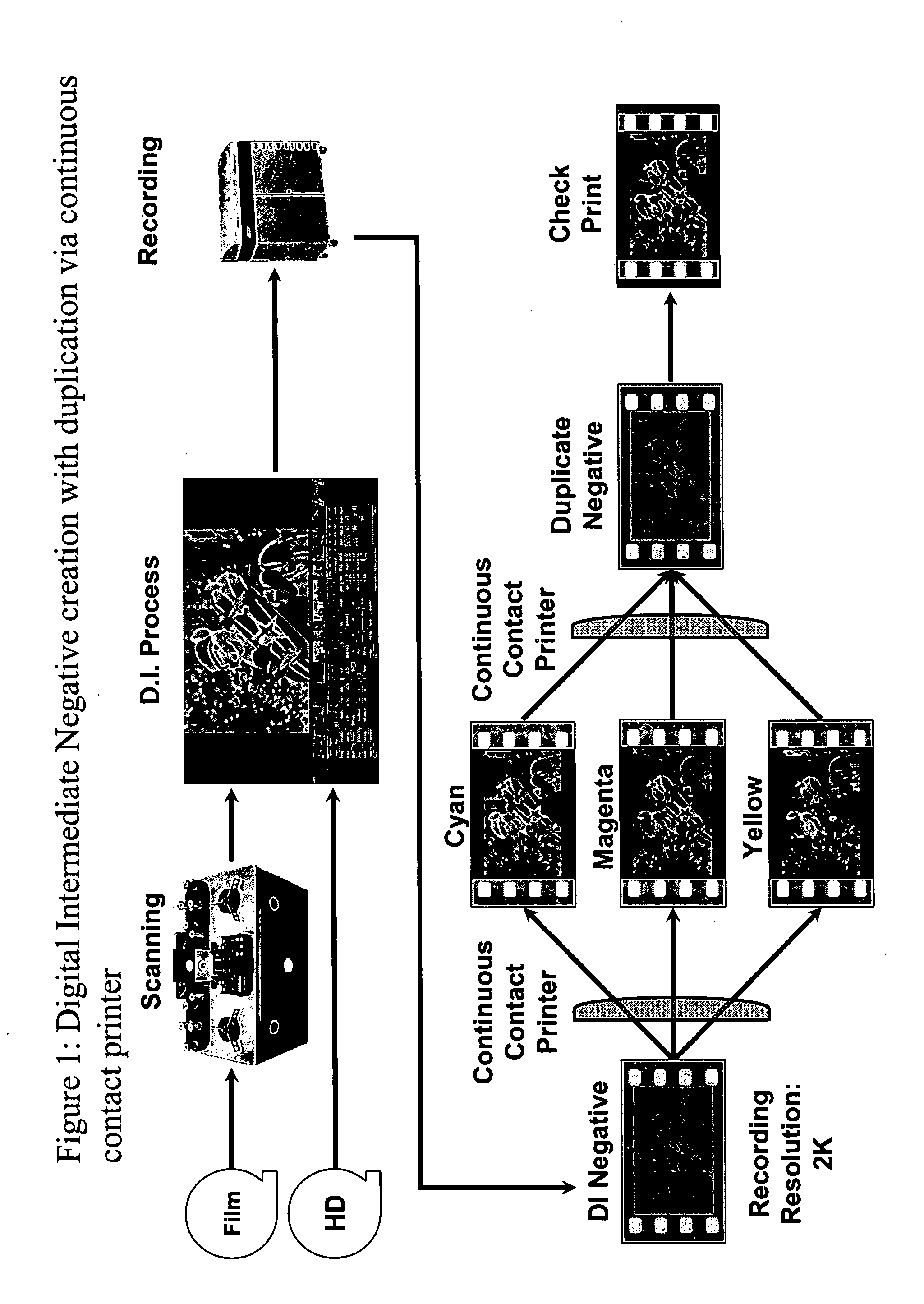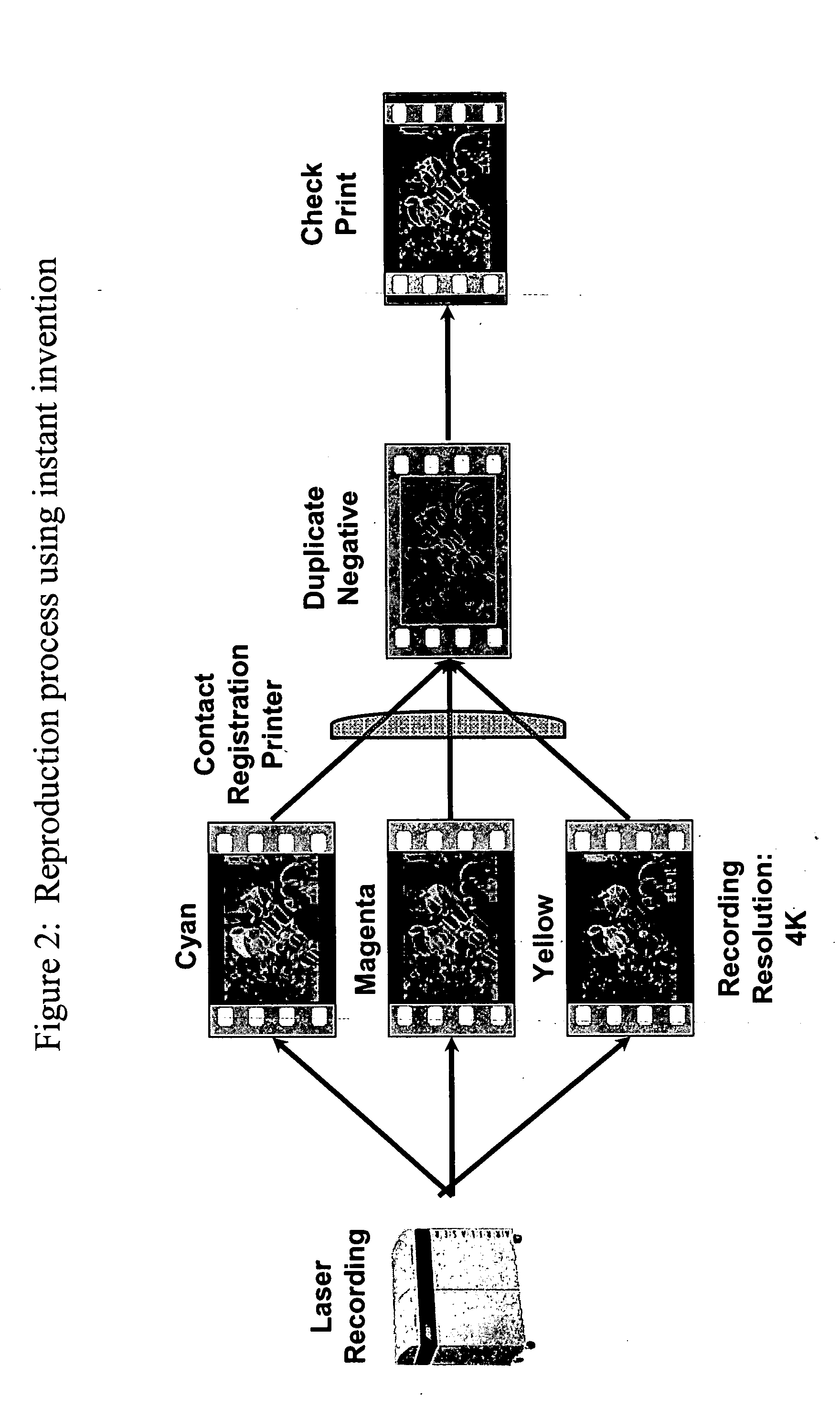Method for conversion and reproduction of film images through a digital process
a digital process and conversion technology, applied in the field of conversion and reproduction of film images through a digital process, can solve the problems of increasing the risk of artistically altering the visual image from its author's original work and vision, increasing the risk of chemical processing errors in the reproduction of the master element, and the cost of color contrast correction color masks printed with the faded element using this prior art method, etc., to achieve the effect of enhancing the accuracy and artistic integrity of the reproduction of the visual image, reducing the cos
- Summary
- Abstract
- Description
- Claims
- Application Information
AI Technical Summary
Benefits of technology
Problems solved by technology
Method used
Image
Examples
example
[0028] This example is intended as an illustration by example of the instant invention, and not as a limitation on the method. Those skilled in the art will be aware of modifications that may be made to this process, including but not limited to, the source of the original visual image. Thus, the present invention contemplates that other visual images such as still photographs or any work that is maintained in visual form may be used as the original in this process.
[0029] In the instant invention, an original motion picture film master is digitally scanned, such that a set of digital files are created representing the color values for the amount of red, green, and blue present at every sampled pixel in the image. Any film or image source may be digitally scanned to create these files. In addition, the files may be created directly by rendering, as in computer-generated imagery (CGI) movies. In a preferred embodiment, the original film material is the original camera negative of a m...
PUM
 Login to View More
Login to View More Abstract
Description
Claims
Application Information
 Login to View More
Login to View More - R&D
- Intellectual Property
- Life Sciences
- Materials
- Tech Scout
- Unparalleled Data Quality
- Higher Quality Content
- 60% Fewer Hallucinations
Browse by: Latest US Patents, China's latest patents, Technical Efficacy Thesaurus, Application Domain, Technology Topic, Popular Technical Reports.
© 2025 PatSnap. All rights reserved.Legal|Privacy policy|Modern Slavery Act Transparency Statement|Sitemap|About US| Contact US: help@patsnap.com



